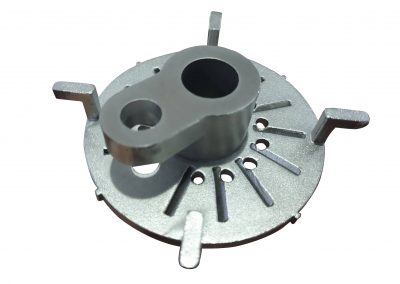Preparing Shell for Lost Wax Casting
Description
The Investment Casting Process is to coat multiple layers of refractory coatings on the surface of the wax mold. Afterward, it is dried and hardened, the wax mold is melted by heating to obtain a shell with a cavity that matches the shape of the wax mold. After the baking process, it is poured and using methods of obtaining castings, so this process is also called lost wax casting. Along with the improvement, research, and development now new wax molding processes continue to appear and now the variety of materials available for molding is increasing.
Preparation The Shell for Lost Wax Casting
The mold that is used in Investment casting is generally used in a shell of multilayer refractory materials. After the module is dipped and coated with a refractory coating, sprinkle the granular refractory material, and then dry and harden. Keep repeating this process until the refractory material layer reaches the required thickness. In this process, a multi-layer shell is formed on the module, which is usually parked for a period of time to be fully dry and hardened, and then de-molded to obtain a multi-layer shell. Several multi-layer shells need to be filled with sand, and some do not. They can be poured directly after the roasting, which is called a high-strength shell.
The quality of the shell means the quality of the casting. According to the working of shells, The requirements of the shell include :
- It should have high normal temperature strength, suitable high-temperature strength, and low residual strength
- I should have good air permeability ( especially high-temperature air permeability) and thermal conductivity
- The linear expansion coefficient should be small, and the thermal expansion is low and the expansion is consistent.
- Should have great resistance to rapid cold and heat and thermochemical stability.
The properties of the shell above are closely related to the materials used in the shell making and the shell-making process. Shell materials include refractory materials, solvents, binders, surfactants, hardeners, etc. And among them, the refractory material and the binder directly form the shell, which is the main shell material. Refractory materials that are used in investment casting are mainly silica sand, aluminosilicate refractories, and corundum, and sometimes magnesia and zircon sand is used.
The powdered refractory material and binder are prepared into the refractory coating, and the granular refractory material is sprinkled on the refractory coating when the shell is made. Binders used in refractory coatings mainly include ethyl silicate hydrolysate, water glass, and silica sol. The paint prepared with ethyl silicate has excellent coating properties, high shell strength, small thermal deformation, high dimensional accuracy of the obtained castings, and good surface quality. It is usually used to produce important alloy steel castings and other castings with high surface quality requirements. The SiO2 content of ethyl silicate produced in China is generally 30% to 34% (mass fraction), so it is called ethyl silicate 32 (32 represents the average mass fraction of SiO2 in ethyl silicate). Ethyl silicate can play a binding role only after hydrolysis
.The coating shell prepare with ethyl silicate has low dimensional accuracy and high surface roughness, unlike the coating shell prepared with water glass is easier to deform and crack. Silica sol also known as silica sol binder is an aqueous solution of silicic acid. Its price is 1/3 – 1/2 lower than ethyl silicate, but the quality of castings produced by using silica sol as a binder is higher than water glass. Silica sol has good stability and can be stored for a long time and it does not require special hardeners when making the shells. The main part of shell making includes module degreasing, coating and sanding, drying and hardening, de-molding, and roasting.
Contact Us

What Is Tooling In Investment Castings?
Tooling in Investment Casting is considered to be wax-injection dies that are used to create wax patterns. If you're following us from our previous trivia posts or you're familiar with how investment casting works, you already know that these wax patterns form the...

What is ElectroPolishing?
Electropolishing or also known as electrochemical polishing, anodic polishing, and electrolytic polishing is really useful for polishing and deburring parts that have complex geometries or are fragile. Electropolishing is an electrochemical finishing process that...

What Is Cast Steel Pouring Process?
Description In investment casting, the process of pouring cast steel is a very important step. The most commonly used pouring method in investment casting is gravity pouring. First, the molten steel is poured from the furnace into the casting ladle and then...

Mold Material Defects
Mold Materials Defects In investment casting, defects are a common problem, for example, this can't be happening in the medical industry, because of its high standard so the finished product needs to be as precise as possible. Mold material defects usually caused by...

What is Casting Defects? Gas Porosity and Shrinkage
What is Casting Defects? Casting defects happen when undesired irregularity happens in the metal casting process, there is many types of defects in the metal casting industry as such: Gas porosity Shrinkage Mould material defects Pouring metal defects Metallurgical...





